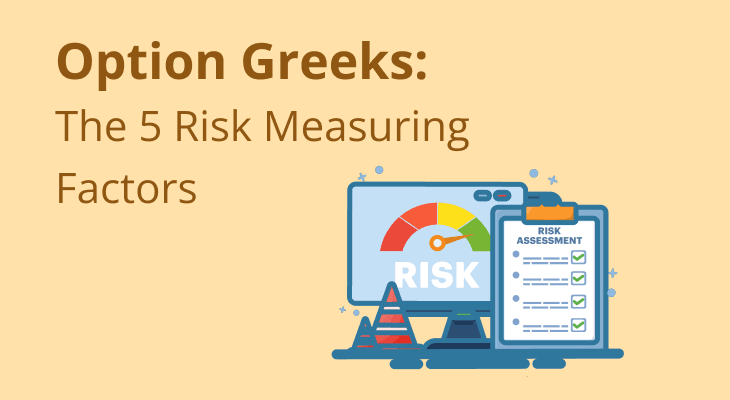
How to Withdraw Money from Your Trading Account?
The stock market is a dynamic space where the prices of assets constantly fluctuate in either direction. If you successfully execute a trade and manage to leverage the price movements to your advantage, you can earn decent profits over time. Profitable trades occur in any one of two ways. You can either buy an asset at a lower price and sell it at a later point in time at a higher price, or you can short-sell an asset today and buy it later at a lower price.
In either case, the profits from the trade will be credited into your trading account. Until you withdraw these funds to your bank account, you cannot access the money and utilise it for real-world transactions. So, how do you withdraw money from your trading account? That’s precisely what we are going to cover in this article.
To understand how to withdraw money from a trading account, you need to first have a clear idea of what these accounts are and how they work. So, let’s begin there.
What is a Trading Account?
A trading account is a financial account used to buy and sell securities such as stocks, bonds, and exchange-traded funds (ETFs) in the stock market. It acts as the transactional link between your demat account (which holds your securities) and your bank account (which holds your money).
When you open a trading account, you do so through a stockbroker, who enables access to the stock exchange. Today, most brokers also offer 2-in-1 or 3-in-1 accounts, combining your trading, demat, and bank accounts into one seamless experience. This setup simplifies transactions and makes managing your investments much easier.
How Does a Trading Account Work?
When you purchase a stock, the amount is debited from your trading account, and the stock is credited to your demat account. Likewise, when you sell, the shares are debited from your demat account, and the proceeds are credited to your trading account.
Here’s how a trading account functions in a typical transaction:
- You open a trading account with a broker. This is linked with both your demat account and your bank account.
- When you buy a stock, the required funds are debited from your trading account, and the shares are credited to your demat account.
- When you sell a stock, the shares are debited from your demat account, and the sale proceeds are credited to your trading account.
To access the funds from a sale, you need to place a withdrawal request from your trading account to your linked bank account. That’s why understanding how to withdraw money from your trading account is an important part of managing your investments.
A Step-by-Step Guide to Withdraw Money from a Trading Account
If you’re wondering how to withdraw from your trading account to your bank account, check out the steps you need to follow in general, although there may be some slight variations from one stockbroker to another.
Step 1: Log Into Your Trading Account
The first thing you need to do is log into your trading account from the stockbroker’s website or their mobile application. Submit the essential credentials like your username, password and OTP if needed. Once you log in, you will find the dashboard of the trading platform.
Step 2: Look For The Fund Withdrawal Option
In the dashboard or the home page of the app or website, locate the option to withdraw the funds in your trading account. The exact call-to-action for this may vary from one broker to the next, but it usually says ‘Withdraw’ or ‘Withdraw Funds.’ Once you click this button, you can begin the process of withdrawing the money from your trading account.
Step 3: Select Your Preferred Method Of Withdrawal
Stockbrokers may offer different withdrawal options like bank transfers or withdrawals to certain electronic wallets. The option to transfer the money to your bank account is the most fundamental method, but you can go through the other options available and choose your preferred method.
Step 4: Enter The Amount You Wish To Withdraw
Once you select the mode of withdrawal, you need to specify the amount you wish to withdraw. You can choose to partially withdraw the funds or completely transfer whatever your trading account holds. Whichever option you choose, ensure that you enter the amount accurately.
Step 5: Review The Details
Before you go to the next step in the process of how to withdraw money from your trading account, you need to review the details you have entered — including your personal details, the amount of transfer and the preferred method of withdrawal. Once you’re sure they are correct, proceed to the next step.
Step 6: Verify And Confirm
Verify your identity as required by your stockbroker. You may do this by answering a secret question or simply entering a one-time password (OTP) sent to your registered mobile number. You will then have to confirm the withdrawal request to initiate the process of withdrawing money from your trading account.
Step 7: Receive The Funds In Your Bank Account
After your withdrawal request is processed by the broker, you will receive the funds in the preferred account that you chose earlier. It’s best to keep an eye on the account for any notifications about the credit of funds. This completes the simple and quick process of how to withdraw money from your trading account.
Striking the Right Balance Between Fund Withdrawals and Account Balance
Effective risk management is fundamental to trading success. While it can be tempting to cash out your profits very frequently, it's also equally crucial to retain enough balance in your trading account. This is necessary to fund your future trades and tap into other trading opportunities.
Over-withdrawing funds from your trading account might compromise your trading potential, but being too conservative could mean that you are unable to enjoy the profits you make. So, it's essential to evaluate your risk tolerance and financial aspirations and strike a balance in your fund withdrawal strategy.
Aligning Your Trading Strategy and Your Goals
Your withdrawal strategy should be in line with your trading objectives and financial goals. If you are a trader with a short-term outlook, you may have a more dynamic approach to participating in the markets. Your profits may also be more frequent, so you may prefer to make regular withdrawals to tap into the immediate gains made.
On the other hand, if you are a long-term investor, your profits may only be realised over several months or years. In that case, your fund withdrawals may also be dispersed across the long-term investment horizon accordingly.
Conclusion
To successfully navigate the stock market, you not only have to focus on earning profits but also need to effectively utilise them to secure your goals. The details of how to withdraw funds from your trading account as outlined in this guide can help you manage your money better. Remember, though, that it's essential to strike a balance between withdrawals and maintaining a strategic account balance, all while aligning with your trading objectives and financial goals.
Read Also: How To Transfer Money From Demat Account to Bank Account?
FAQ
Is there a minimum or maximum withdrawal limit on m.Stock?
m.Stock does not typically impose a minimum withdrawal limit. However, the maximum withdrawal amount depends on your available ledger balance after accounting for any open positions or margin requirements. It’s advisable to check your available withdrawable balance before initiating a request.
How long does it take for the withdrawn funds to reflect in my bank account?
Once a withdrawal request is placed, the funds usually get credited to your linked bank account within 24 working hours. Timelines may vary slightly based on the time of request and banking hours.
Is there any fee or charge for withdrawing funds from m.Stock?
No, m.Stock does not charge any fees for withdrawing funds from your trading account to your bank account. The withdrawal process is seamless and free of additional transaction charges.
Can I withdraw profits earned from intraday trading immediately?
Profits from intraday trades become part of your settled balance only after the trade is settled by the exchange, which typically takes T+1 working day. Once settled, the funds become available for withdrawal from your trading account.


